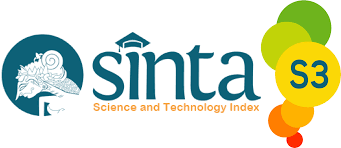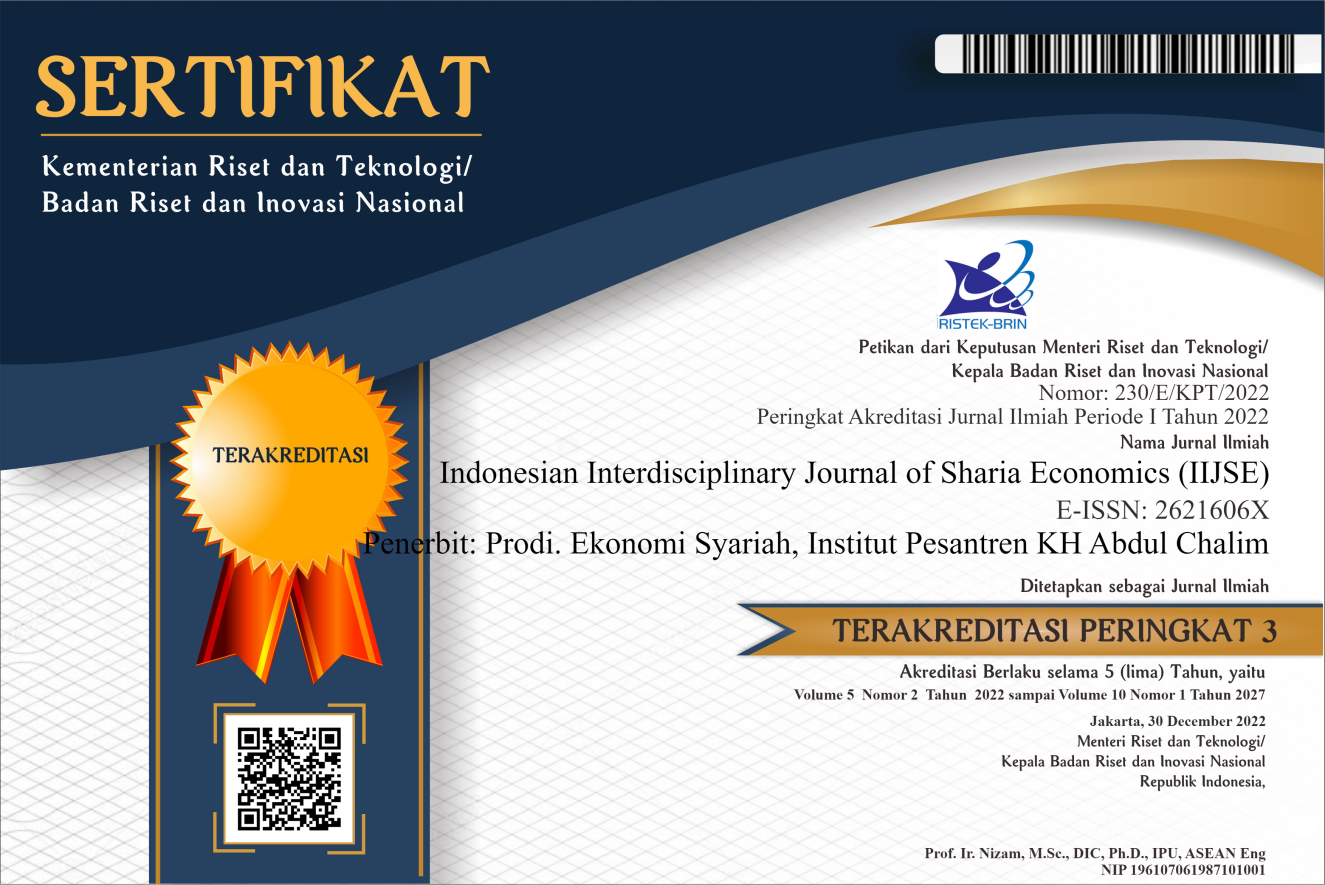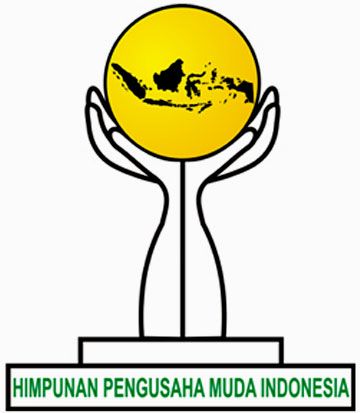Analysis in Economics: Peer to Peer Lending as an Inflation Indicator
Abstract
This study analyzes the relationship between peer-to-peer landing and inflation. Peer-to-peer lending is a means of public lending and inflation is an economic indicator that shows price changes. The method used is vector autoregressive which can explain the two-way relationship of two variables and seasonal aspects in time series data. The results of this study are that the two variables influence each other and there is an influence of the time aspect in the time series data.
Downloads
References
A. Basha, S., Elgammal, M. M., & Abuzayed, B. M. (2021). Online peer-to-peer lending: A review of the literature. Electronic Commerce Research and Applications, 48, 101069. https://doi.org/10.1016/j.elerap.2021.101069
Almuttaqin, M. A., & Nur, N. M. (2023). The Influence of The Money Supply on The Inflation Rate in Indonesia for The 2010-2020 Period. Management Studies and Entrepreneurship Journal, 4(2), 1061–1068. http://journal.yrpipku.com/index.php/msej
Arner, D. W., Barberis, J. N., & Buckley, R. P. (2015). The Evolution of Fintech: A New Post-Crisis Paradigm? SSRN Electronic Journal, January. https://doi.org/10.2139/ssrn.2676553
Avgeri, E., & Psillaki, M. (2024). Factors determining default in P2P lending. Journal of Economic Studies, 51(4), 823–840. https://doi.org/10.1108/JES-07-2023-0376
Ben Romdhane, Y., Kammoun, S., & Loukil, S. (2024). The impact of Fintech on inflation and unemployment: the case of Asia. Arab Gulf Journal of Scientific Research, 42(1), 161–181. https://doi.org/10.1108/AGJSR-08-2022-0146
Canova, F., & Ciccarelli, M. (2013). Panel vector autoregressive models: A survey. Advances in Econometrics, 32(15), 205–246. https://doi.org/10.1108/S0731-9053(2013)0000031006
Ediagbonya, V., & Tioluwani, C. (2023). The role of fintech in driving financial inclusion in developing and emerging markets: issues, challenges and prospects. Technological Sustainability, 2(1), 100–119. https://doi.org/10.1108/TECHS-10-2021-0017
Gao, M., Yen, J., & Liu, M. (2021). Determinants of defaults on P2P lending platforms in China. International Review of Economics and Finance, 72, 334–348. https://doi.org/10.1016/j.iref.2020.11.012
Ghozali, I. (2011). Ebook Imam Ghozali Metode Penelitian. 3–5.
Iman, N. (2024). Idiosyncrasies, isomorphic pressures and decoupling in technology platform business. Journal of Science and Technology Policy Management, 15(4), 737–764. https://doi.org/10.1108/JSTPM-12-2021-0190
Isbahi, M. B., Zuana, M. M. M., & Mariana, E. R. (2022). The Technology Strategy in Website Communication Media in Improving Business Activities. Majapahit Journal of Islamic Finance and Management, 1(2), 126–138. https://doi.org/10.31538/mjifm.v1i2.17
Junarsin, E., Hanafi, M. M., Iman, N., Arief, U., Naufa, A. M., Mahastanti, L., & Kristanto, J. (2023). Can technological innovation spur economic development? The case of Indonesia. Journal of Science and Technology Policy Management, 14(1), 25–52. https://doi.org/10.1108/JSTPM-12-2020-0169
Kumalasari, D., & Farida, A. (2024). Utilizing Financial Technology (Fintech) to Drive Increased Economic Growth. Jurnal Ilmiah Manajemen Kesatuan, 12(1), 9–16. https://doi.org/10.37641/jimkes.v12i1.2339
Lütkepohl, H. (2007). Vector Autoregressions. A Companion to Theoretical Econometrics, September, 678–699. https://doi.org/10.1002/9780470996249.ch33
Mercangöz, B. A. (2021). Handbook of research on emerging theories, models, and applications of financial econometrics. Handbook of Research on Emerging Theories, Models, and Applications of Financial Econometrics, March, 1–456. https://doi.org/10.1007/978-3-030-54108-8
Nigmonov, A., Shams, S., & Alam, K. (2021). FinTech and macroeconomics: Dataset from the US peer-to-peer lending platform. Data in Brief, 39, 107666. https://doi.org/10.1016/j.dib.2021.107666
Oh, E. Y., & Rosenkranz, P. (2020). Determinants of Peer-to-Peer Lending Expansion: The Roles of Financial Development and Financial Literacy. SSRN Electronic Journal, 613. https://doi.org/10.2139/ssrn.3590998
Rumondang, I., Yusgiantoro, I. B., & Rofifa, J. S. (2020). Effects of information and communication technology on financial inclusion : Evidence across emerging and developing countries. Otoritas Jasa Keuangan, 1–32.
Sugiyono. (2011). Metode penelitian kuantitatif kualitatif dan r&d. In Bandung Alf. Bandung: Jawa Barat. Alfabeta.
Wang, X., Sadiq, R., Khan, T. M., & Wang, R. (2021). Industry 4.0 and intellectual capital in the age of FinTech. Technological Forecasting and Social Change, 166(February), 120598. https://doi.org/10.1016/j.techfore.2021.120598
Copyright (c) 2025 Syakirah Putri Septian, Akbar Almuttaqin

This work is licensed under a Creative Commons Attribution-ShareAlike 4.0 International License.
Authors who publish with this journal agree to the following terms:
- Authors retain copyright and grant the journal right of first publication with the work simultaneously licensed under a Creative Commons Attribution License that allows others to share the work with an acknowledgment of the work's authorship and initial publication in this journal.
- Authors are able to enter into separate, additional contractual arrangements for the non-exclusive distribution of the journal's published version of the work (e.g., post it to an institutional repository or publish it in a book), with an acknowledgment of its initial publication in this journal.
- Authors are permitted and encouraged to post their work online (e.g., in institutional repositories or on their website) prior to and during the submission process, as it can lead to productive exchanges, as well as earlier and greater citation of published work.


















